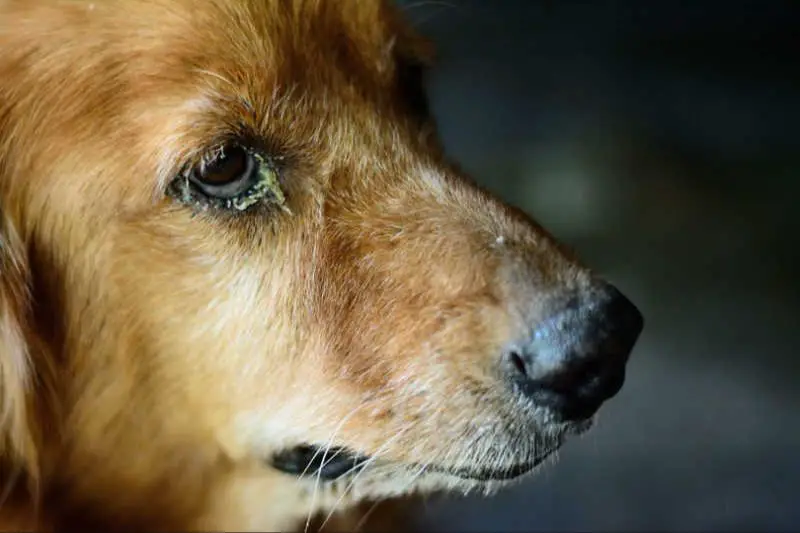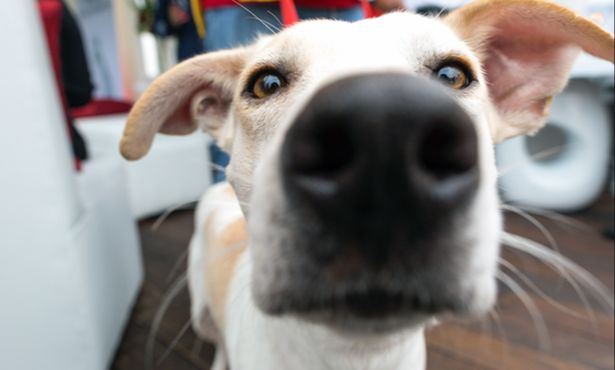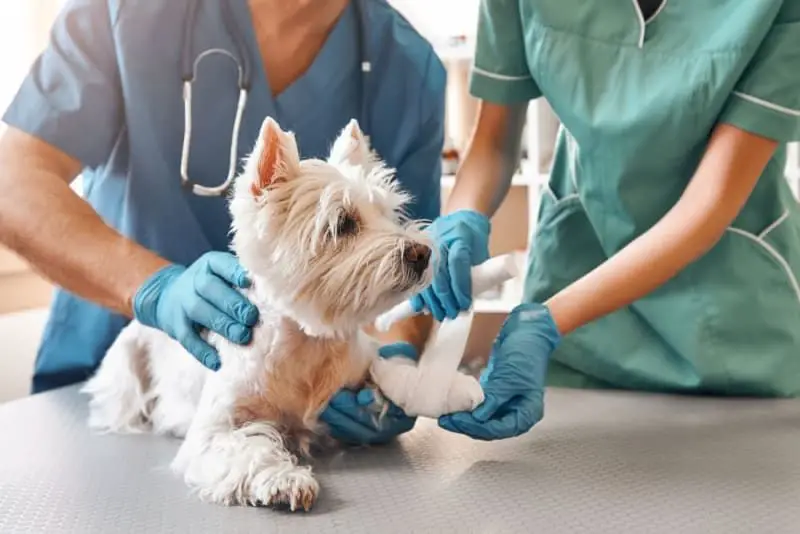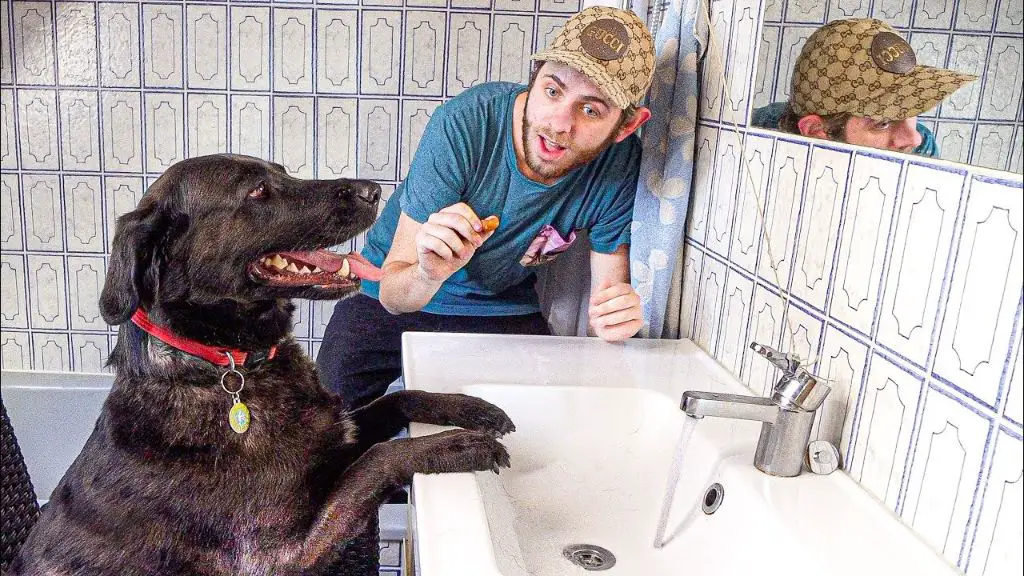Introduction
A new dog virus emerged in 2023 that has veterinarians concerned. According to Kurt Williams, the director of the American Veterinary Medical Association, this virus is highly contagious among dogs and can lead to severe respiratory illness. The virus was first detected in March 2023 in the United States and has since spread to dog populations in Canada, Mexico, and parts of Europe. So far, the areas most affected in North America are major cities on the coasts like New York, Los Angeles, and Vancouver. Until the illness is contained, veterinarians are urging dog owners to be vigilant about their pets’ health and take precautions.
Symptoms
Many dogs infected with the new virus may show mild to moderate symptoms similar to kennel cough. The most common symptoms include:

-
Coughing and sneezing
-
Runny nose and watery eyes
-
Lethargy and lack of appetite
-
Fever
In more severe cases, dogs may experience difficulty breathing, vomiting, and diarrhea. Pneumonia has also been reported in some cases. Puppy and senior dogs tend to experience more severe symptoms overall.
The severity of symptoms can range from mild to critical:
-
Mild: Occasional coughing and sneezing
-
Moderate: Persistent cough, fever, lethargy
-
Severe: Shortness of breath, vomiting, diarrhea
-
Critical: Respiratory distress, pneumonia, collapse
Most infected dogs recover fully with supportive care, but puppies and seniors are at higher risk of developing complications. Seek veterinary care immediately if your dog shows any concerning symptoms.
Transmission
The new dog virus is highly contagious and spreads easily between dogs through direct contact. The virus is present in infected dogs’ saliva, mucous and feces, which allows for transmission through activities like playing, licking and sniffing. The virus can also spread through contact with contaminated objects, surfaces and food/water bowls.

While the risk of the virus spreading from dogs to humans appears low at this time, caution is still recommended. The virus has not been shown to persist on human skin for prolonged periods, but transmission could potentially occur through contact with an infected dog’s bodily fluids. Wearing gloves when cleaning up after sick dogs can help reduce human infection risk. There have been a few isolated cases of humans contracting a mild flu-like illness after contact with infected dogs, but human-to-human transmission has not been documented.
To limit spread among dogs, avoid creating situations where multiple dogs can directly interact if the virus is present in your area. Restrict contact with unfamiliar dogs and supervise interactions with household dogs. Promptly isolate dogs displaying symptoms until a veterinary diagnosis is made.
At-Risk Breeds
Certain dog breeds appear to be more susceptible to this new virus than others. Smaller breeds such as Chihuahuas, Dachshunds, and Yorkies seem to be at highest risk. Larger breeds with flat faces like Pugs, Shih Tzus, and Bulldogs also have an elevated risk of contracting the virus.
There are a few reasons why these breeds may be more prone to this virus:
- Their small size and airways make them more vulnerable to respiratory infections in general.
- Brachycephalic breeds with short snouts struggle with many breathing issues already.
- Toy breeds typically have weaker immune systems compared to larger dogs.
- Dogs that spend more time indoors have greater exposure to airborne viruses.
While any dog is susceptible, owners of at-risk breeds should take extra precautions to protect their pets during a viral outbreak. Monitoring for symptoms carefully and avoiding crowded indoor spaces with unknown dogs can help reduce risk.
Diagnosing the New Dog Virus
Diagnosing the new dog virus can be challenging due to the similarities in symptoms with other illnesses. There are a few key ways vets test for the virus:
PCR Testing
The most accurate way to diagnose the new dog virus is through polymerase chain reaction (PCR) testing. This detects the virus’s genetic material in a mucus or tissue sample from the dog. It can identify an active infection.
Antibody Testing
Antibody blood tests look for antibodies created by the dog’s immune system to fight the virus. A positive antibody test indicates the dog was exposed to the virus at some point, but it does not confirm an active infection.
Challenges in Diagnosing
Unfortunately, there are limitations to the available testing that make accurately diagnosing the new dog virus difficult. The PCR test only works when the dog is actively shedding virus cells. The antibody test shows exposure, but does not indicate timing or active illness. There is also the potential for false positive and false negative results.
Given the similarities in symptoms with kennel cough and canine influenza, vets often need to run multiple tests to rule out other respiratory illnesses. They may also analyze the severity and combination of symptoms to make a clinical diagnosis when lab test results are inconclusive.
Treatment
There are a few medications and therapies available to treat dogs infected with the new dog virus. The most common treatments prescribed by veterinarians include:

Antiviral Medications
Antiviral drugs that target the specific virus are the primary treatment. These work by stopping the virus from multiplying in the dog’s body. Based on initial trials, antiviral medication given within the first 2 days of symptom onset has an efficacy rate of approximately 85% in resolving the infection. Side effects are mild but can include loss of appetite, lethargy and gastrointestinal upset.
Supportive Care
Supportive care is given to manage symptoms and keep the dog as comfortable as possible while fighting the virus. This includes intravenous (IV) fluids to prevent dehydration, anti-nausea medication, fever reducers and electrolyte supplements. Supportive care has no direct effect on the virus itself but helps strengthen the dog’s immune system response.
Hospitalization
Veterinarians may recommend hospitalization and round-the-clock care for dogs with severe symptoms or those at high risk of complications. Hospitalization allows for consistent monitoring, medication administration, IV fluid support and other intensive treatment.
The combination of antiviral medication, supportive care therapies and hospital monitoring provides the best chance for dogs to make a full recovery from the new virus.
Prevention
While there is currently no vaccine for the new dog virus, there are steps dog owners can take to help prevent infection.
Ways to Prevent Dog Infection
The virus is highly contagious, so limiting your dog’s exposure to other dogs is crucial. Avoid dog parks, daycares, boarding facilities, and other high-dog traffic areas. Walk your dog on-leash and at off-peak times when fewer dogs are out. Thoroughly wash food and water bowls, toys, leashes, and other items after use outside the home.
Practice good hygiene when interacting with dogs. Wash hands before and after, and avoid letting dogs lick your face. Disinfect home surfaces regularly. Keep your dog up-to-date on vaccines to ensure a strong immune system.
Boost your dog’s health with quality nutrition, exercise, and mental stimulation. A robust immune system gives your dog the best chance at fighting off illness.
Vaccine Development Status
Researchers are actively working to develop a vaccine for the new dog virus. Early vaccine trials show promise, but experts estimate a fully approved vaccine is still 12-18 months away. Several major veterinary schools and pharmaceutical companies are collaborating to fast-track the vaccine development process.
Once a vaccine is available, veterinarians will likely recommend routine vaccination for all dogs to prevent spread of this highly contagious virus. Priorities for initial doses may go to breeds at higher risk and dogs in shelters or other high-exposure populations.
While awaiting an effective vaccine, vigilant prevention and avoiding unnecessary dog exposures remain critical to protect your pet.
Outlook
Expert projections show that this new dog virus has the potential to spread rapidly in the coming months and years. As of early 2023, the virus has been detected in over a dozen states, indicating that it is already spreading efficiently between dogs. Experts warn that all dog owners should be vigilant about protecting their pets.
The ongoing research into this virus aims to better understand how it is transmitted, which dogs are most vulnerable, and how to effectively treat infected animals. Several veterinary schools and laboratories are actively studying this virus to try to develop an effective vaccine. However, developing and testing a new vaccine could take a year or more.
In the meantime, veterinarians recommend keeping dogs away from crowded areas like dog parks where disease transmission can occur more readily. Restricting contact with unknown dogs and maintaining good hygiene practices at home can also reduce a dog’s risk of exposure. Experts urge dog owners to contact their vet right away if their pet displays any potential symptoms of this new viral illness.
While the long-term effects of this emerging dog virus are still unknown, the good news is that research and prevention efforts are underway. Dog owners are encouraged to remain alert and keep an eye out for any signs of illness in their beloved pets.
Protecting Your Dog
There are several things dog owners can do to protect their pets from this new virus:

-
Keep your dog up to date on all vaccinations. While there is not yet a vaccine for this specific virus, staying current on core vaccines helps strengthen your dog’s immune system.
-
Avoid contact with other dogs that appear sick. Limit your dog’s exposure to public places like dog parks where illness can spread.
-
Wash your hands before and after interacting with your dog to prevent disease transmission.
-
Thoroughly clean and disinfect your home, especially surfaces your dog contacts like food bowls, leashes, and toys.
-
Monitor your dog for symptoms like lethargy, appetite loss, fever, coughing, or eye/nose discharge. Seek prompt veterinary care if you notice anything abnormal.
It’s important to contact your vet right away if your dog develops concerning symptoms. Early intervention and supportive care make a big difference in recovery. Your vet can run tests to diagnose the virus and provide proper treatment to get your dog back to full health.
Working closely with your vet and following preventative steps gives your dog the best chance of staying happy and healthy.
Conclusion
In summary, in 2023 veterinarians are seeing an increase in cases of a new canine virus, though much is still unknown. The virus causes fever, lethargy, coughing, and gastrointestinal issues in dogs. Certain breeds like Retrievers and Shepherds seem most at risk. There is no cure yet, but vets can provide supportive care. Vaccines are being developed but not yet available. Prevention involves avoiding dog parks and other high-risk areas. While concerning, the virus does not seem to have a high fatality rate if properly managed. Dog owners should remain vigilant about symptoms and seek veterinary care if concerned.
Pet owners should consult with their veterinarian, who can provide guidance on protecting dogs from illness based on the latest information. Reputable health organizations like the CDC and WHO also offer up-to-date details on emerging diseases. With proper precautions and care, dog owners can keep their pets safe and healthy even as new risks emerge.